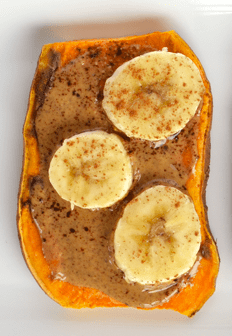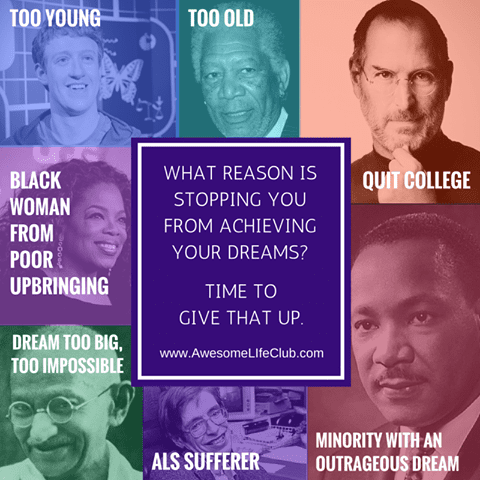Do you dream of writing a book one day?
You’ll want to read this post for the truth on what it is like to author a book, and if it’s worth the effort. It will help you get clear on whether writing a book is a dream you should go after, or an idea that you should retire.
The truth about writing a book
Last month my book Super You: How Technology is Revolutionizing What it Means to Be Human hit bookshelves and online retailers across the United States and Canada, and around the world.
It marked a major milestone in my life. I had always wanted to write a book and knew I would some day. Now, I’ve written three. Two I self-published. And this most recent book was published by Pearson Education (under the Que imprint). Pearson is the second largest book publishing company in the world.
I’m not the only person in the world to dream about writing and publishing books. I hear it a lot. So does my husband who has written 5 books. Many people want to do the same. Being understood is a deep desire for all humans. So, it’s no surprise that people are inspired to write books.
So, here are the goods…for better and for worse.
You may read through this and declare book writing is not for you. That’s perfectly fine. In fact, it’s quite noble to retire an idea you once had that you recognize now is not for you. And better you come to the realization sooner than later, so you can stop being mad at yourself for not getting in action around that book you think you should be writing.
If this post doesn’t stop you you’ll want to read the post: Writing a book: Getting started.
What you need to know about writing a book before you write the first word
1. You will not get rich:
Few authors ever make much money writing books: Most business non-fiction books pay an advance of $4,000 to $15,000 to write the manuscript. It is paid out during the writing process in chunks. When you deliver the full manuscript and the book goes on sale you pay that back through royalties on sales at the rate of about $1 to $2 per sold book. So if you earn $10K as your advance you need to sell 5000 copies to break even on the advance. If you don’t you never see another cent, although you do not have to pay your advance back to the publisher. If you sell 50,00o copies then you’d see income of #500 to $100,000 less your advance. Here’s the worse news…few books ever sell more than about 1,000 to 2,000 or so copies.
2. Making time to write is not easy:
Writing a book is not easy. In most cases you have to fit in writing time around your already busy schedule. This is true whether you self-publish, or if you are backed by a publishing company. Our book Super You took two years to write with two authors (me and my husband Andy) then we brought on our friend Sean Carruthers to help us finish the last few chapters. All told we worked on the book 10 to 20 hours per week each. The book was very research heavy. Besides fitting in writing time you also have to fit in time to plan and research. Depending on the type of book you’re writing, this could be an incredible amount of work. It was for us. Super You was painfully research heavy. I interviewed major experts and then had to try and understand different fields of research so that I could distill the information down and make it something mainstream readers could understand. As I said earlier, the book took almost three years to complete. Writing was done in between a 9 to 5 job that paid the bills and other important things I had to manage and don’t get paid for, like: being a mom, wife, and taking care of myself. If your book doesn’t require the expertise of others and is more about imparting your wisdom, the book writing process can go much faster. (Andy wrote his first book in four months every morne for 3 to 4 hours before work and a half day on Saturday). It takes time.
3. Writing is not something you do only when you’re inspired. You have to take it on like a full-time job:
When you write a book, it’s a job. If you wait to be inspired to start to write, to get into the right head space, then good luck. There are ways to get yourself in a writing groove so you feel like writing, but some days it doesn’t come easily. You need to write consistently every day regardless of whether you want to or not. (Especially true if you have to meet a publishing deadline!) If you’re self-publishing you might not choose to write each day. You’re on your own time. But, this will slow down your process of getting your book done. Stick to this rule: Write for 3 to 4 hours a day. Few writers can produce quality work once they hit hour four in a day.
4. The emotional journey of writing feels like this. Having a strong emotional IQ and being willing to stay committed is crucial:
When you start writing you’ll have a cascade of ideas and you’ll likely think they are great. You’ll likely feel like this book writing thing is going to be awesome and a piece of cake. You may soon find this is not the case.

Depending on the book, the writing process can be daunting. It can be painful at times. There are times where you will love yourself and think you are a brilliant writer. And, there will be times where you hate yourself and the book and wish the whole thing would end. I want to tell you to be prepared for the journey. But you won’t be. You can’t be. Just have to do it. And then know what for what you are in for the next time you you think “I should write another book”. You’ll need to develop techniques to deal with your emotions. For instance, if you’re having writer’s block, a trip around your neighborhood in the sun might help you get in the groove.
5. Be clear on why you’re doing it:
We’ve talked about money, so put that aside. It’s not a good way to get rich. Thats said, a nonfiction book can be a door opener for a lucrative speaking career. Fiction writers not so much. But bestselling fiction writers can make their money off of film and/or TV rights in some cases. Even if you’re backed by a publisher, you have to do a lot of work after the book is written to promote it. The publisher makes it easier, but in the end the success of your book depends on you. Be clear on why you’re writing your book before you start, because in the dark days when you are mid-manuscript you’ll need to reach down and pull that reason out and get cosy with it to keep going.
6. It takes a community:
Writing a book requires a team of people. You can’t do it alone. Don’t even try. You might be doing most of the writing yourself but you need the support of loved ones to keep you going and potentially additional writers, researchers or ghost writers. You also need one or more editors. You’ll need a graphic designer to create the front and back covers. If you sign with a publishing house they will provide these. If you self publish, you’re on your own. Then you need to hire a company to print your book. You can do this cheaply if you self publish by using companies like 99designs and printing books in China, this can count as your “team”.
7. During the period you are writing the book, you’ll likely go through periods of “why the hell am I doing this again”?
Book writing can feel kind of lonely at times. It may feel like you’re spending hours going nowhere. This is because your book has not been received by an audience yet. Each day you get up and you write. You do this sometimes for years. And there are times where you get a bit lost. You wonder: Why am I spending hours writing this? Will people love it? Where am I going? Am I out of coffee? Who drank all the wine?
So let me ask you a question…After reading this do you still want to write a book?
Yes? Then read: Writing a book: Getting started. I’ll tell you what you need to know about publishing vs. self publishing, how to get a publisher, and give you all the tips I’ve learned that will make the writing process much easier for you.
No? No problem. This is good news. Focus your efforts on another dream.
And if you have a question about the book writing process I would love to hear it. Post in the comments below and I’ll do my best to answer you quickly.





 at has become cemented overtime that has connected displeasure to fitness. You need to retrain your brain to see fitness as fun.
at has become cemented overtime that has connected displeasure to fitness. You need to retrain your brain to see fitness as fun.





 We all have reasons that seem valid, but for the most part, they are BS. Are you willing to give up a reason that’s been holding you back this week?
We all have reasons that seem valid, but for the most part, they are BS. Are you willing to give up a reason that’s been holding you back this week?